Actors, writers, UPS and more: America is barreling toward a summer of labor strikes
More than 650,000 American workers are threatening to go on strike this summer — or have already done so — in an avalanche of union activity not seen in the U.S. in decades.
The combined actors and writers strikes in Hollywood are already a once-in-a-generation event. Unions for United Parcel Service Inc. and Detroit’s Big Three automakers are poised to join them in coming weeks if contract negotiations fall through. One Bank of America Corp. analyst put the odds of a United Auto Workers strike at more than 90%. And while logistics experts and financial analysts expected the Teamsters to reach a deal with UPS, their confidence has dwindled as the July 31 deadline approaches.
“This will be the biggest moment of striking, really, since the 1970s,” said labor historian Nelson Lichtenstein, who directs the University of California, Santa Barbara’s Center for the Study of Work, Labor and Democracy.
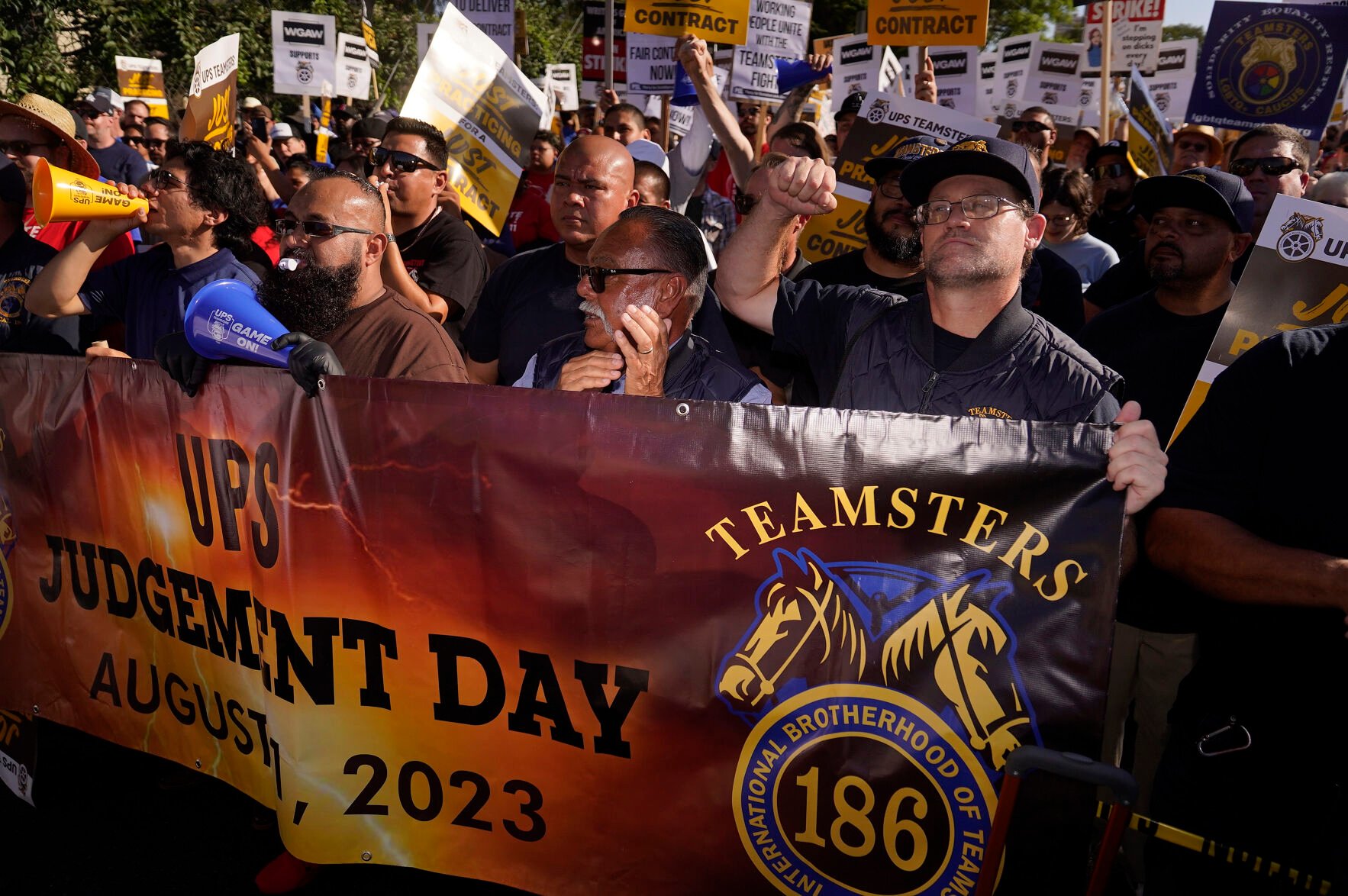
Damian Dovarganes, Associated Press
UPS Teamsters members hold a rally Wednesday in downtown Los Angeles as a national strike deadline nears. The Teamsters said that they will resume contract negotiations with UPS next week, marking an end to a stalemate that began two weeks ago when both sides walked away from talks.
Even before the 100,000-plus actors joined in last week, both the number of strikes and workers on strike were up in the first half of this year, according to Bloomberg Law labor data. Similar trends are playing out in other countries: A cost-of-living crisis has unions across Europe flexing their muscles, with the the UK losing the most working days to strikes in decades.
The pandemic years have, in some ways, reenergized American labor. Emboldened by tight labor markets and agitated after shouldering new risks, workers notched a series of surprising victories at some of the most prominent U.S. companies. Now, wary of soaring corporate profits as major technological changes threaten to upend their industries, unions are ready to test their clout.
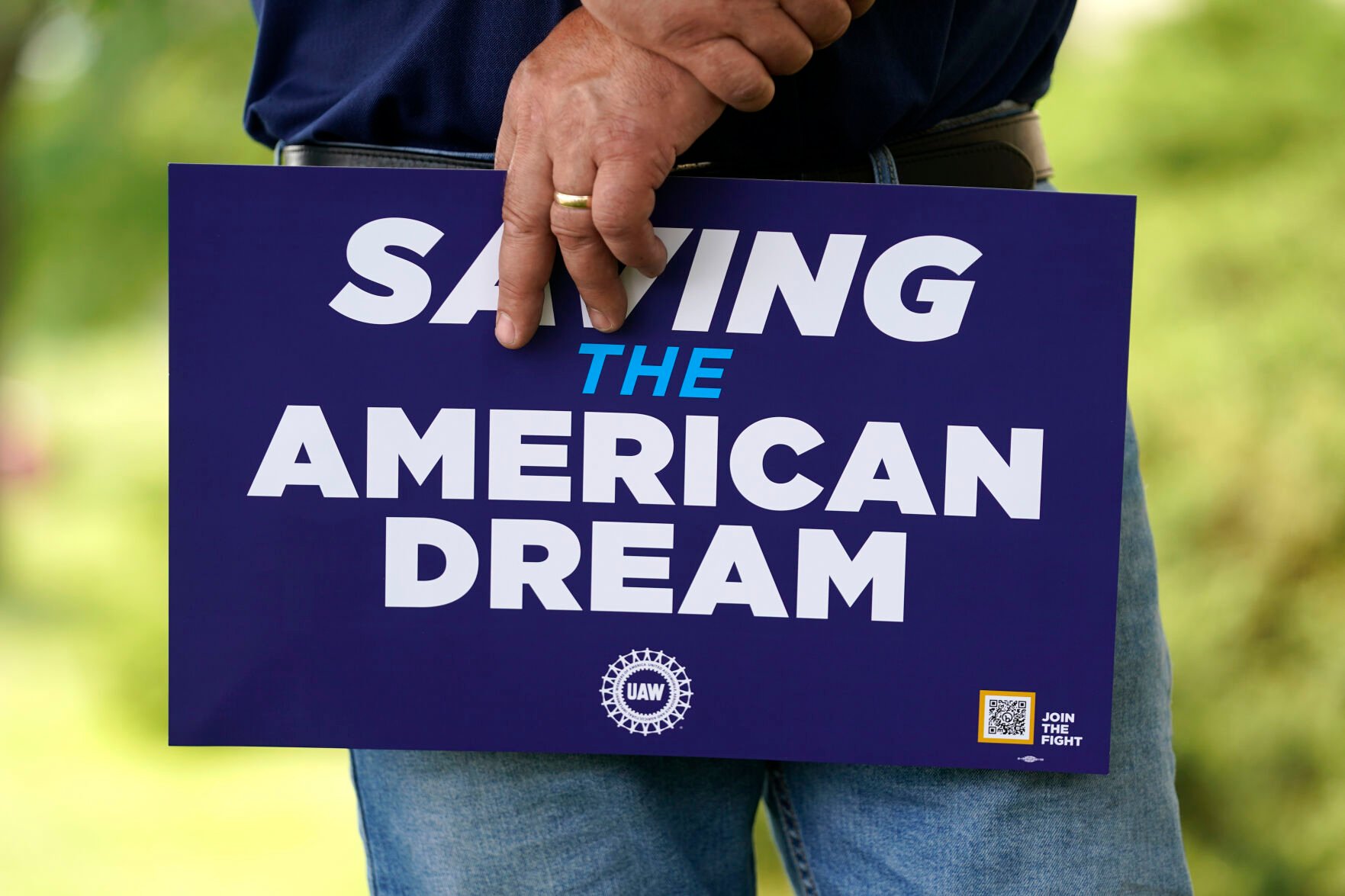
Paul Sancya, Associated Press
A United Auto Workers member holds a sign July 12 outside the General Motors Factory Zero plant in Hamtramck, Mich.
“There’s an ambition here that I think is new,” said Lichtenstein. “They’re on the offense.”
The companies, for their part, are facing their own economic realities. In Hollywood, studio profits are down because of a shift to streaming and Wall Street has punished companies for their lagging financials. UPS is confronting difficult headwinds with package demand declining as the country emerges from the pandemic. The carmakers say they already offer generous pay and benefits and need to keep wages competitive with lower-paying rivals like Tesla Inc. as they invest billions into the shift to electric vehicles.
“It’s very clear that unions are quite alive,” said Michael Lotito, who co-chairs the Workplace Policy Institute at the management law firm Littler. “The jury’s out on how well they are.”
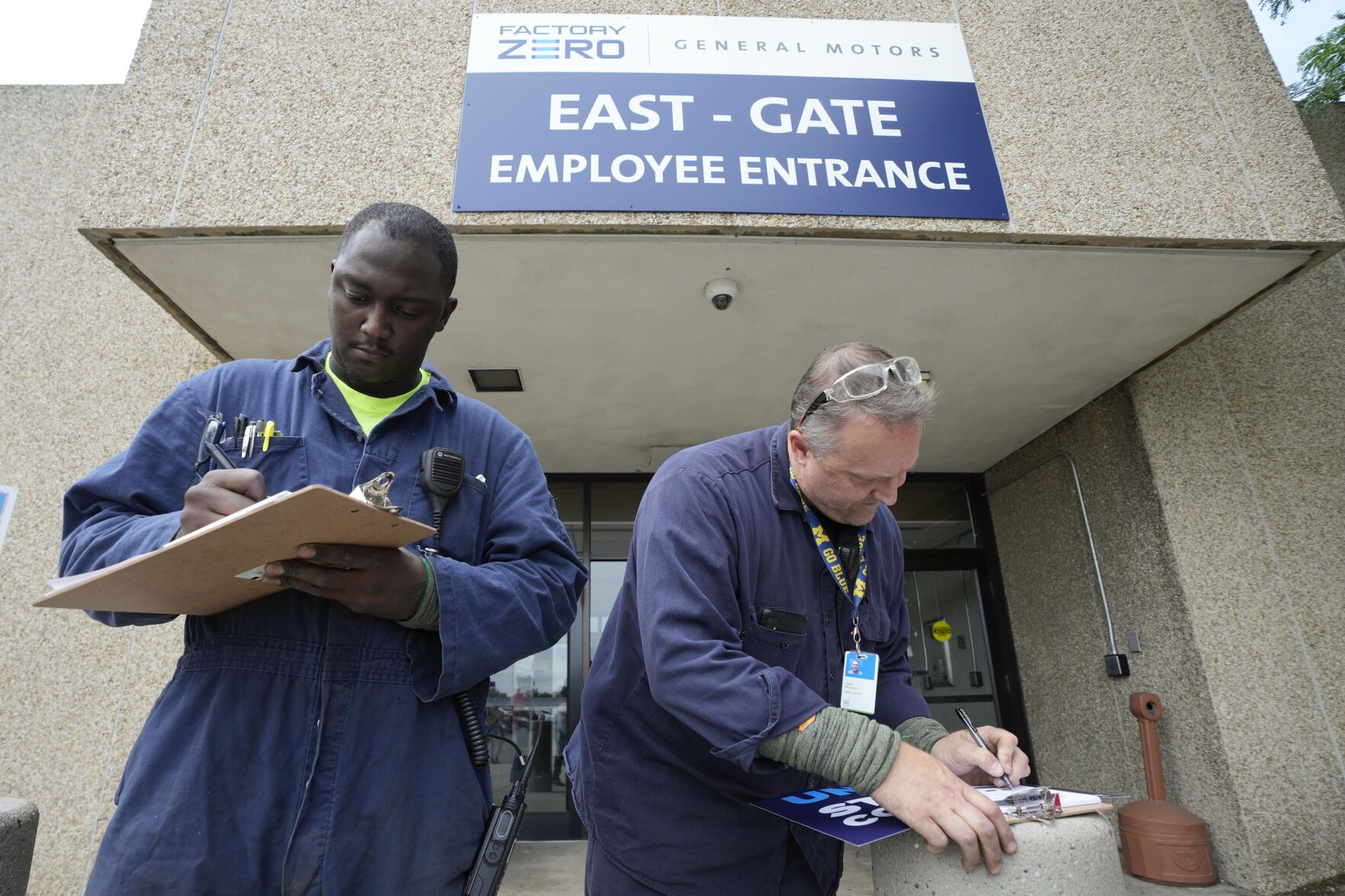
Paul Sancya, Associated Press
Autoworkers Jalen Patterson, left, and David McHenry fill out a pledge July 12 in support of the United Auto Workers union outside the General Motors Factory Zero plant in Hamtramck, Mich.
The showdowns could have sweeping consequences, not just for the hundreds of thousands of workers striking, but for the much-diminished American union landscape. The share of the U.S. private sector that’s unionized has fallen from one-quarter half a century ago to just 6% today. Few groups have as much leverage to upend company plans, capture public attention and force concessions as the organized workers who deliver Americans’ packages, make their cars and entertain them.
“In terms of workers in America who still have the ability to change their conditions, these are three of the top 10,” said Larry Cohen, a former Communications Workers of America union president, who now chairs the advocacy group Our Revolution.
If the unions come out on top, it could boost organizing efforts at companies like Amazon.com Inc. and Starbucks Corp. that, despite recent wins, still remain largely union free. Teamsters President Sean O’Brien has said he plans on using the union’s success to win over Amazon workers.
“Hopefully, Amazon employees look at this and go: ‘You know what? We deserve this too,’ ” said Minnesota UPS warehouse worker Rikki Schreiner, who has been at the company for two decades.
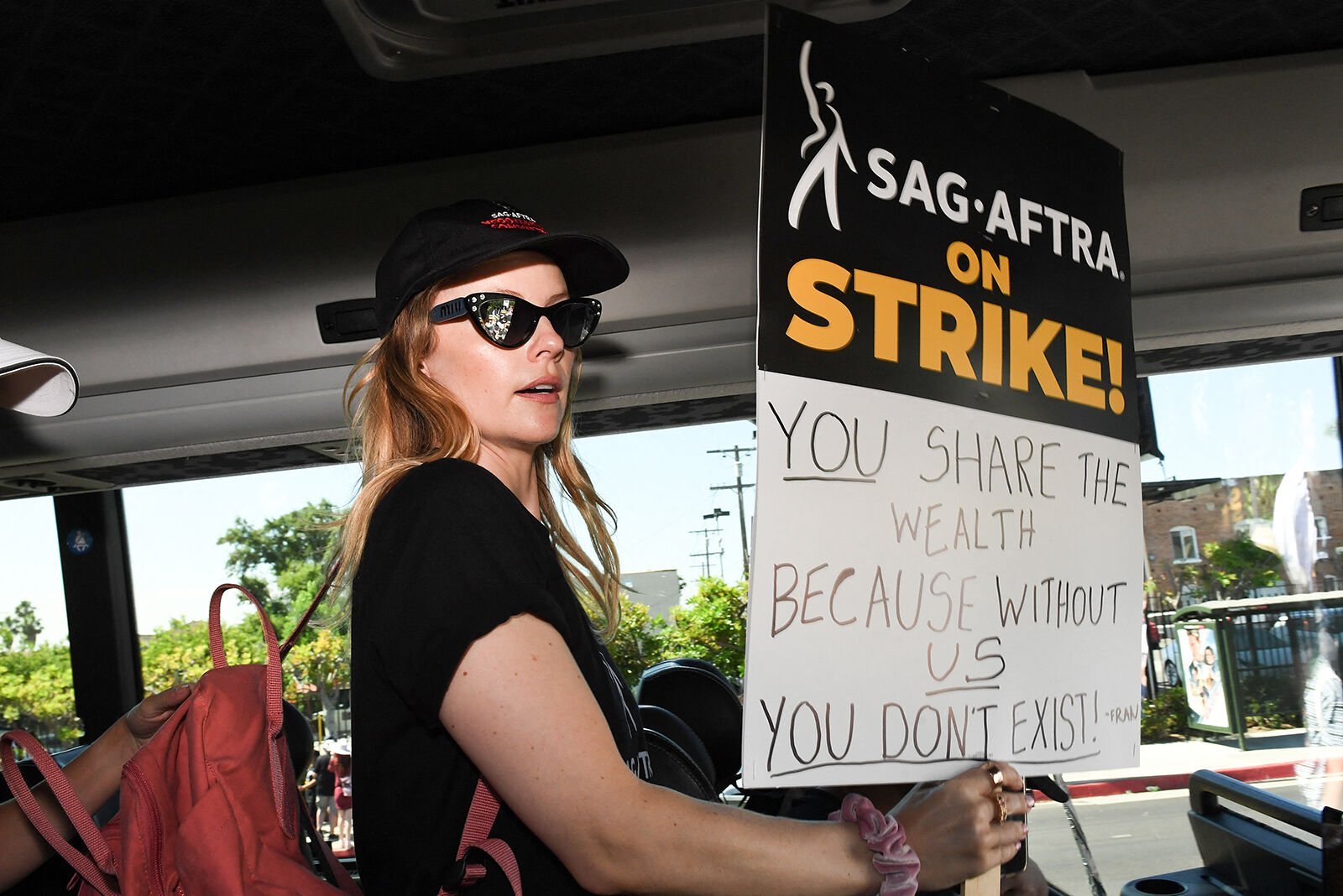
Valerie Macon, Getty Images
A member of the SAG AFTRA bargaining committee steps out of the bus for union members traveling to picket lines to join members of the Writers Guild of America and the Screen Actors Guild on July 14 outside Paramount Studios in Los Angeles.
Even the launch of strikes could galvanize non-union workers, but the move doesn’t come without risks. Drawn-out stoppages can drain members’ finances — and the unions’ — making it harder to fund other efforts. Strikes that lose momentum can leave members divided and disillusioned. If fights end with disappointing deals, they could become cautionary tales. Managers often hold up unproductive and costly strikes as a reason to not unionize.
“Workers are watching each other and trying to learn from each other,” said Sharon Block, who served in President Barack Obama’s Labor Department and now directs Harvard Law School’s Center for Labor and a Just Economy.
The details of the current clashes themselves vary, but one thing they have in common is money. Workers across industries are pushing for a bigger share of corporate profits, particularly as inflation has bitten into their paychecks. Actors and writers want higher base pay and more residuals from streaming shows. The autoworkers not only want raises but to ensure the people powering the shift to electric cars get the same pay and benefits as other plant workers. UPS Teamsters members haven’t forgotten how “essential” their work was during pandemic lockdowns, and think they should be compensated accordingly.
“If my work is so important, then why shouldn’t I be properly rewarded for it?” said Portland, Oregon UPS employee Nick Marrapode.
Workers also say past contract deals gave some staff worse terms than peers. One issue in the Hollywood stoppage is that talk show and gameshow writers for streamers — including giants like Netflix Inc. — lack the contractual protections provided to their counterparts working for cable stations, even tiny ones. UAW members are pushing to end “two-tier” arrangements that pay newer employees significantly worse than long-timers, and UPS staff are pushing to close the gap between full- and part-time worker compensation.
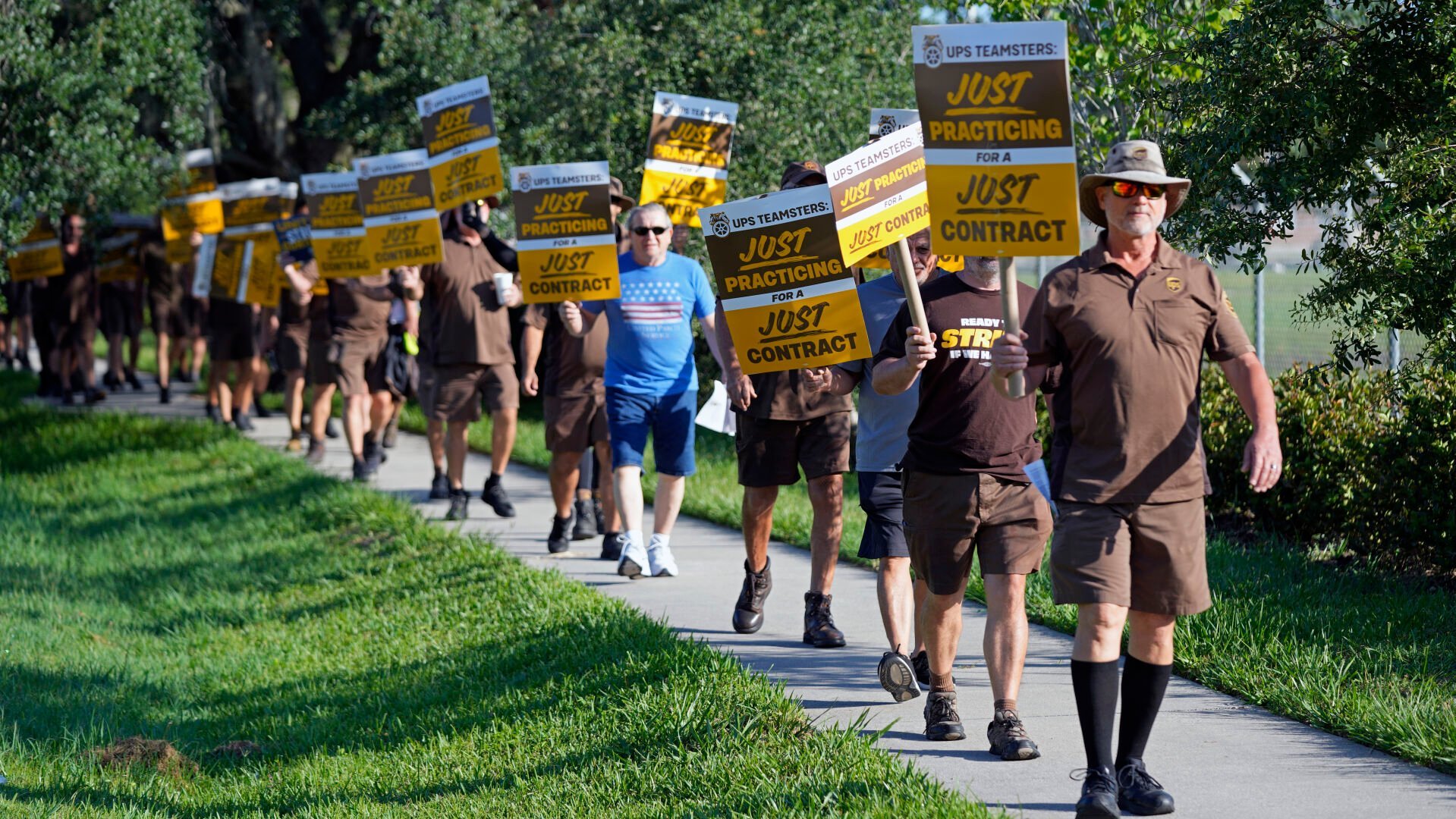
John Raoux, Associated Press
UPS workers go through a rehearsal of a pending strike July 13 at the UPS Customer Center in Longwood, Fla.
“UPS needs to share the billions of dollars that they made with their workers,” said Scott Gove, a 35-year UPS employee in New Hampshire. “I think that that’s a bitter pill for them.”
Strikes of this scale weren’t always scarce in the U.S. At least 800,000 workers were involved in work stoppages every year throughout the 1950s. Their cadence has plummeted along with overall unionization rates.
But in recent years, public opinion of unions has ticked up to highs not seen in decades. “Unions are viewed very much as a solution now,” said Seth Harris, a former deputy National Economic Council director under President Joe Biden. “They’re not viewed as a museum piece.”
The strikes will now test their power.
